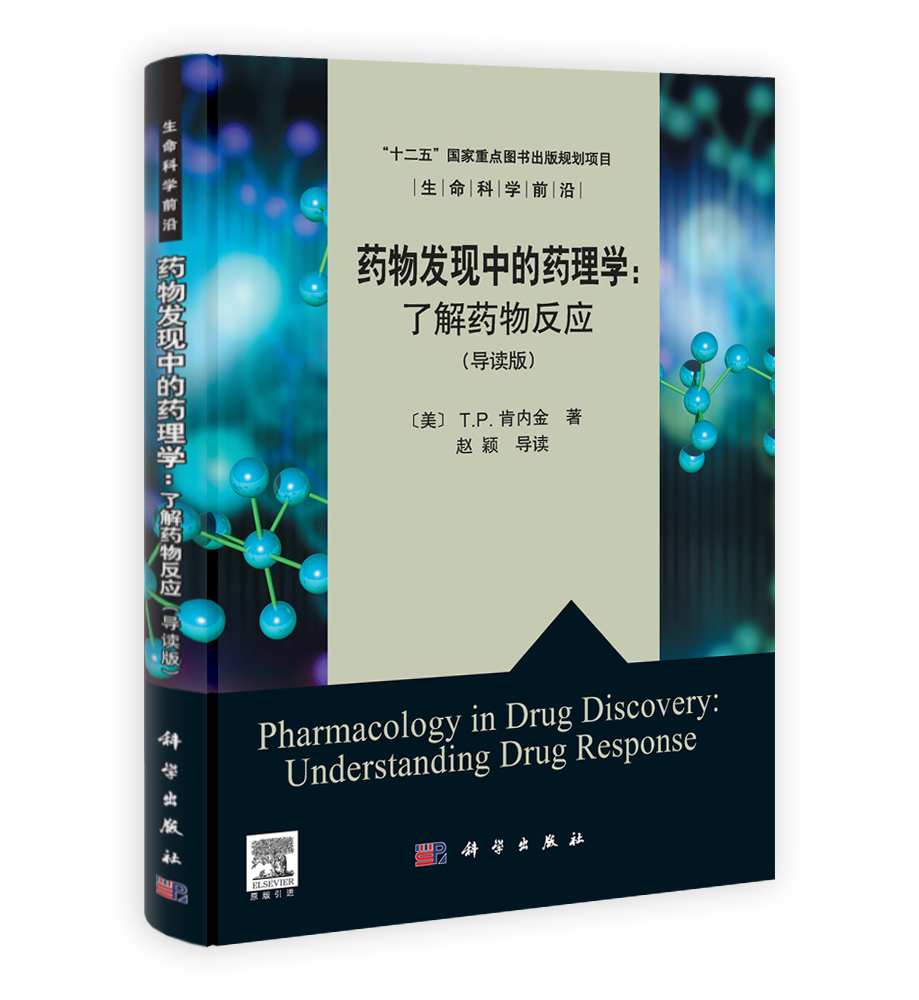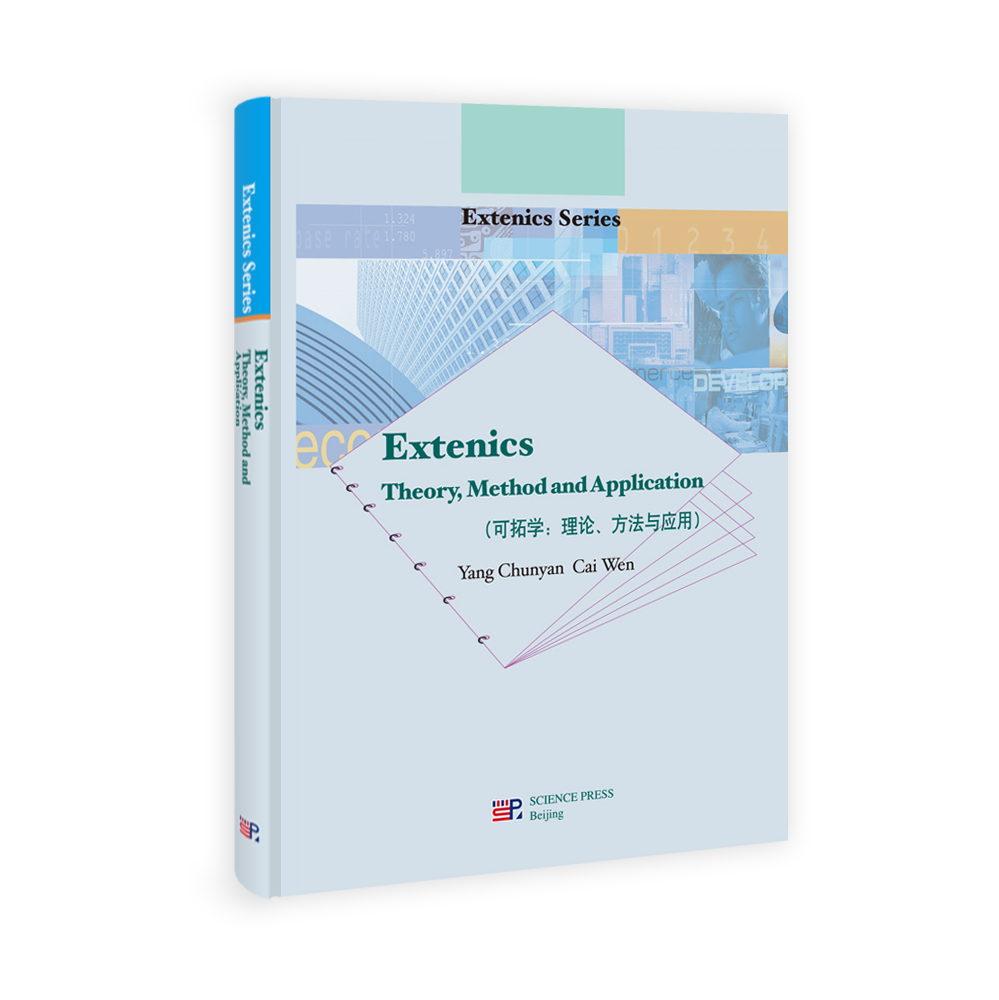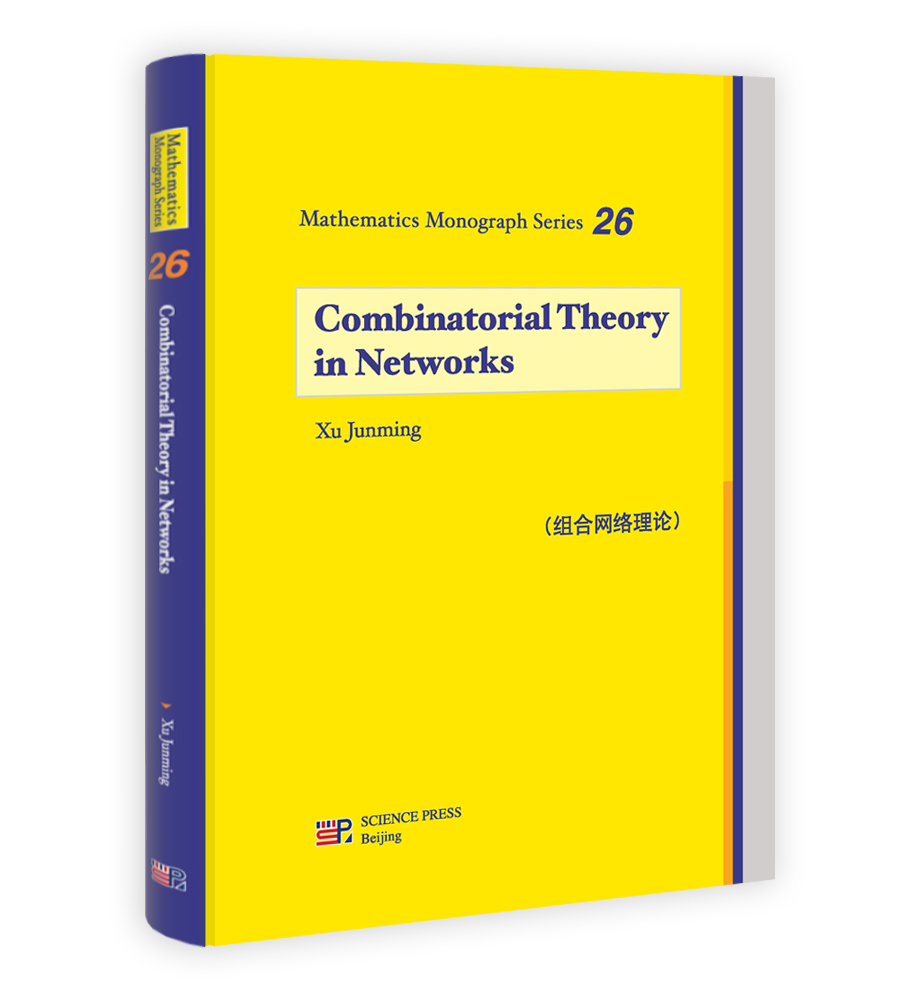近年,纳米技术及其基础科学以前所未有的速度增长与发展。基于此,本书旨在为读者们呈现一本动态的、权威的和真正能获取有效信息的参考著作,力求反映此学科领域全面而广阔的发展状况。 此书共有5卷,由国际专家组写作而成,内容涉及材料科学、物理学、生命科学、化学等领域;每篇文章的写作都兼具学术性、批判性与可读性,内容深入浅出,前后呼应,是一本跨学科领域研究者们不可或缺的有价值的参考资料。 本书适合化学、物理学、材料科学、生物学、工程学等领域的研究生及科研人员参考,对于纳米研究实验室、学术机构,涉及纳米和生物材料、材料科学等方面的专业组织、公司、企业等也是不可多得的参考资料。
样章试读
目录
1.01.1 Introduction
1.01.2 Ground-State Properties of PBI Aggregates
1.01.3 Excited-State Properties
1.01.4 Summary and Conclusion
References
1.02 碳纳米管:电子结构和光谱
1.02.1 Introduction
1.02.2 Geometry of the CNT Lattice
1.02.3 Electronic and Optical Properties
1.02.4 Characterization of the Exciton State
1.02.5 Photoexcitation Dynamics:The Critical Role of Defects
1.02.6 Vibrational Modes in CNTs
1.02.7 Coherent Phonons in CNTs
1.02.8 Conclusions
References
1.03 有机半导体中的激光作用
1.03.1 Introduction
1.03.1.1 Amplified Spontaneous Emission
1.03.1.2 Superradiance and SF
1.03.1.3 Cavity-Based Lasers
1.03.1.4 Random Lasers
1.03.1.5 Experimental Setup for Studying Laser Action
1.03.2 Laser Action in PCPs
1.03.2.1 ASE in Solutions and Thin Films of DOO-PPV Polymer
1.03.2.1.1 SN in dilute DOO-PPV solutions
1.03.2.1.2 ASE in DOO-PPV films with superior optical confinement
1.03.2.1.3 Transient ASE dynamics in DOO-PPV films
1.03.2.2 Cylindrical Microlasers of DOO-PPV
1.03.2.2.1 Microring lasers
1.03.2.2.2 Microdisk lasers
1.03.2.3 Random Lasers in Films and Photonic Crystals
1.03.2.4 RL and Cancerous Tissues
1.03.2.5 SF in Organic Gain Media
1.03.2.5.1 SN in DOO-PPV films with poor optical confinement
1.03.2.5.2 SF in DSB single crystals
1.03.3 Summary
References
1.04 有机发光二极管及其应用综述
1.04.1 Introduction and Historical Milestones
1.04.2 Electronic Structure of and Processes in Luminescent π-Conjugated Materials
1.04.2.1 Electronic Structure
1.04.2.2 Monomolecular Processes
1.04.2.3 Bimolecular Processes
1.04.3 Basic Properties of OLEDs
1.04.3.1 Basic Structure of OLEDs
1.04.3.2 OLED Fabrication Procedures
1.04.3.2.1 Thermal vacuum evaporation
1.04.3.2.2 Wet-coating techniques
1.04.3.3 Materials for SMOLEDs and PLEDs
1.04.3.3.1 Materials for the anode,hole injection layer,and the HTL
1.04.3.3.2 Electron-transporting and electron-emitting small molecules
1.04.3.3.3 Small-molecular guest dye emitters
1.04.3.3.4 White OLEDs(WOLEDs)
1.04.3.3.5 Phosphorescent small molecules and electrophosphorescent OLEDs
1.04.3.3.6 Fluorescent polymers
1.04.3.3.7 Cathode and organic/cathode buffer materials
1.04.3.4 Carrier Injection and Transport in OLEDs
1.04.3.4.1 Introduction
1.04.3.4.2 Polaron versus disorder models for carrier hopping
1.04.3.4.3 Long-range correlations
1.04.3.4.4 Carrier injection
1.04.3.4.5 SCLC versus injection-limited current mechanisms
1.04.3.5 OLED Efficiency
1.04.3.5.1 The EQE ηext
1.04.3.5.2 The outcoupling efficiency ζ
1.04.3.5.3 The IQE ηint and the roll-off at high current density
1.04.3.5.4 The charge balance factor γ
1.04.3.5.5 The SE/TE branching ratio rST
1.04.3.5.6 The PL quantum yield ηPL
1.04.3.5.7 The power efficiency ηpower
1.04.3.5.8 The state-of-the-art OLED efficiencies-stacked(tandem)OLEDs
1.04.3.6 OLED Degradation Mechanisms
1.04.4 Commercial Applications of OLEDs
1.04.4.1 Opto-Electronic Applications
1.04.4.1.1 Microdisplays
1.04.4.1.2 Small-screen displays for small-mobile media devices
1.04.4.1.3 OLED televisions
1.04.4.1.4 WOLEDs for SSL
1.04.4.1.5 Other custom OLED lighting applications
1.04.4.2 Chemical and Biological Sensors Applications
1.04.4.2.1 Introduction
1.04.4.2.2 O2 and O2-based sensors
1.04.4.2.3 Other sensors and challenges
1.04.5 Summary and Concluding Remarks
References
1.05 有机自旋电子学
1.05.1 Introduction
1.05.2 Basic Concepts of Spintronic Devices
1.05.2.1 Spin Injection
1.05.2.2 Spin Transport and Relaxation
1.05.2.2.1 Spin-orbit coupling
1.05.2.2.2 Hyperfine interaction
1.05.2.3 Spin Detection
1.05.2.4 Different Magnetoresistive Effects:GMR and TMR
1.05.3 Organics in Electronics
1.05.3.1 Organic Semiconductors
1.05.3.1.1 Conjugated polymers
1.05.3.1.2 Small molecules
1.05.3.2 Charge Transport in OSs
1.05.3.3 Advantages of Organics in Spintronics
1.05.4 Organic Spin Valves
1.05.4.1 Spin Injection and Detection:Role of Interface
1.05.4.2 Spin Transport and Relaxation
1.05.4.2.1 Effect of impurity inclusion on the spin-transport property of OS spacers
1.05.4.3 Organic MTJs
1.05.4.4 OLEDs with SP Electrode
1.05.4.5 CNT and Graphene-Based Spin Valves
1.05.5 Organic Magnetoresistance
1.05.5.1 Experimental Observations
1.05.5.2 Theoretical Models-Physical Understanding
1.05.6 Conclusions and Open Questions
References
1.06 结构有机非线性光学
1.06.1 Introduction
1.06.2 Nonlinear Optics
1.06.2.1 Second-Order NLO
1.06.2.2 Third-Order NLO
1.06.3 Organic NLO
1.06.3.1 Nonlinear Optical Materials
1.06.3.2 Organic NLO Materials
1.06.3.3 Second-Order Organic NLO Materials
1.06.3.3.1 Dipolar NLO chromophores
1.06.3.3.2 E-O polymers
1.06.3.4 Third-Order Organic NLO Materials
1.06.4 Structured Organic NLO
1.06.4.1 Structured Second-Order Organic NLO Materials
1.06.4.2 Molecular Engineering of Chromophores
1.06.4.3 Molecular Engineering of Polymers
1.06.4.3.1 Guest?host polymers
1.06.4.3.2 Linear chain polymers
1.06.4.3.3 Cross-linked polymers
1.06.4.4 Molecular Engineering of Dendrimers
1.06.4.5 Molecular Glasses and Their Supramolecular Self-Assembly
1.06.4.6 Structured Third-Order Organic NLO Materials
1.06.5 Organic Nanophotonics
1.06.5.1 Nanofabrication Techniques
1.06.5.2 Device Structures and their Properties
1.06.5.2.1 Optical waveguides
1.06.5.2.2 Organic silicon hybrid nanophotonics
1.06.6 Conclusions and Perspectives
References
1.07 量子点:理论
1.07.1 Introduction
1.07.2 Single-Particle Methods
1.07.2.1 Density Functional Theory
1.07.2.2 Empirical Pseudopotential Method
1.07.2.3 Tight-Binding Methods
1.07.2.4 k·p Method
1.07.2.5 The Effect of Strain
1.07.3 Many-Body Approaches
1.07.3.1 Time-Dependent DFT
1.07.3.2 Configuration Interaction Method
1.07.3.3 GW and BSE Approach
1.07.3.4 Quantum Monte Carlo Methods
1.07.4 Application to Different Physical Effects:Some Examples
1.07.4.1 Electron and Hole Wave Functions
1.07.4.2 Intraband Optical Processes in Embedded Quantum Dots
1.07.4.3 Size Dependence of the Band Gap in Colloidal Quantum Dots
1.07.4.4 Excitons
1.07.4.5 Auger Effects
1.07.4.6 Electron-Phonon Interaction
1.07.5 Conclusions
References
1.08 量子点:合成与表征
1.08.1 Introduction
1.08.2 Synthesis of QDs in Batch-Type Reactors
1.08.2.1 Water-Based Synthesis Approaches to QDs
1.08.2.2 Organometallic Synthesis of QDs:The Hot-Injection Approach
1.08.2.3 Versatility of the Hot-Injection Approach
1.08.2.4 Greener Hot-Injection Syntheses
1.08.2.5 Mechanisms of Nucleation and Growth of QDs by the Hot-Injection Approach
1.08.2.6 Organometallic Syntheses of QDs Not Based on the Hot-Injection Approach
1.08.2.7 The Liquid-Solid-Solution Approach for the Synthesis of QDs
1.08.3 Synthesis of QDs in Continuous Reactor Systems
1.08.3.1 Introductory Note
1.08.3.2 Synthesis in Microchannels
1.08.3.3 Synthesis in Spinning Disk Processors
1.08.3.4 Thermospray Synthesis of QDs
1.08.4 Optical and Electrical Characterization Methods of QDs
1.08.4.1 Introductory Notes
1.08.4.2 Absorption and Photoluminescence Experiments
1.08.4.3 Time-Resolved Absorption and Emission Spectroscopy
1.08.4.4 Raman Spectroscopy
1.08.4.5 Optical Imaging and Spectroscopy of QDs Beyond the Diffraction Limit
1.08.4.6 Electrical Characterization
1.08.5 Characterization of QDs by TEM Techniques
1.08.5.1 Introductory Notes
1.08.5.2 TEM Imaging Techniques
1.08.5.3 TEM Spectroscopic Techniques
1.08.5.4 Mixed TEM Imaging/Analytical Techniques for Chemical Mapping
1.08.6 Structural/Compositional Studies of QDs by X-Ray-Related Techniques
1.08.6.1 Introduction
1.08.6.2 X-Ray Powder Diffraction
1.08.6.3 X-Ray Imaging
1.08.6.4 Surface-Sensitive X-Ray Scattering Techniques
1.08.6.5 X-Ray Absorption Fine Structure
1.08.6.6 X-Ray Photoelectron Spectroscopy
References
1.09 核/壳纳米晶体
1.09.1 Introduction
1.09.2 Short Summary of the Growth Technique and Mechanism of Core-Shell Nanocrystals
1.09.2.1 Growth Dynamics
1.09.2.2 Synthesis Technique for Semiconductor Materials
1.09.3 Semiconductor Core-Shell Nanocrystals
1.09.3.1 Type I Heterostructures
1.09.3.2 Type II Heterostructures
1.09.3.3 Quantum-Dot-Quantum-Well
1.09.4 Limits and Shape Control
References
1.10 无机纳米线
1.10.1 Introduction
1.10.2 Synthesis
1.10.2.1 Metal and Elemental Nanowires
1.10.2.2 Metal-Oxide Nanowires
1.10.2.3 Metal-Chalcogenide Nanowires
1.10.2.4 Metal Pnictide and Other Nanowires
1.10.3 Self-Assembly,Functionalization,and Coaxial Nanowires
1.10.3.1 Self-Assembly and Functionalization
1.10.3.2 Coaxial Nanowires and Coatings on Nanowires
1.10.4 Properties and Applications
1.10.4.1 Metal and Elemental Nanowires
1.10.4.2 Metal-Oxide Nanowires
1.10.4.3 Metal-Chalcogenide Nanowires
1.10.4.4 Metal Pnictide and other Nanowires
1.10.4.5 Nanowire-Polymer Nanocomposites
1.10.5 Conclusions and Outlook
References
1.11 超越圆柱状物质的无机纳米管
1.11.1 Introduction
1.11.2 Chronology and Challenges of the Field
1.11.3 Stability of Inorganic NTs
1.11.3.1 Scrolls
1.11.3.2 Rare Morphologies:Microtubes, and Micro-and Nano-Ribbons
1.11.3.3 Cylindrical Geometry vis-à-vis Stability of a Finite Strip
1.11.4 Variety of Inorganic NTs
1.11.5 Morphology of Single NTs and Hybrid Nanostructures
1.11.5.1 MoS2 and WS2 NTs
1.11.5.2 Polytypes
1.11.5.3 Growth by Diffusion
1.11.5.3.1 Fullerene-like particles grown by diffusion
1.11.5.3.2 Nano-chimneys or open tubes
1.11.5.3.3 Diffusion and etching
1.11.5.4 NTs as Nanoreactors
1.11.6 Alloyed NTs and Chirality
1.11.7 NTs as Channels for Nanofluidics
1.11.8 Mechanical Properties
1.11.9 Nanosafety
1.11.10 Conclusions
References
1.12 氧化锌纳米棒及其异质结构在电学和光学纳米器件方面的应用
1.12.1 Introduction
1.12.2. Metal-Organic Vapor-Phase Epitaxy of ZnO Nanorods and Their Heterostructures
1.12.2.1 Catalyst-Free MOVPE of Homogeneous ZnO Nanorods
1.12.2.2 Growth Mechanism of ZnO Nanorods
1.12.2.3 Fabrications of ZnO/MgxZn1-xO Coaxial Nanorod Heterostructures
1.12.2.4 Fabrications of ZnO/MgxZn1-xO Nanorod Quantum Well Structures
1.12.3 Electrical Nanodevice Applications
1.12.3.1 Vertical-Type Nanorod Devices
1.12.3.2 Horizontal-Type Nanorod Devices
1.12.3.2.1 Fabrication methods of individual nanorod devices
1.12.3.2.2 Determination of carrier concentration using thermoelectric power measurements
1.12.3.2.3 ZnO nanorod Schottky diodes
1.12.3.2.4 ZnO nanorod FETs
1.12.3.2.5 ZnO nanorod logic gates
1.12.3.3 High-Performance FETs Based on ZnO/MgxZn1-xO Coaxial Nanorod Heterostructures
1.12.4 Nanophotonic Device Application
1.12.4.1 Near-Field Measurement of Spectral Anisotropy and Optical Absorption of Isolated ZnO Nanorod Single QWs
1.12.4.2 A Nanophotonic AND Gate Device Using ZnO Nanorod Double QWs
1.12.4.3 Nanophotonic Energy Up-Conversion Using ZnO Nanorod Double QWs
References
1.13 贵金属纳米颗粒:合成和光学性质
1.13.1 Introduction
1.13.2 Optical Properties
1.13.2.1 Mie's Application
1.13.2.2 Optical Response of a Free Electron Gas
1.13.2.3 Quasistatic Approximation
1.13.2.4 Extensions of the Quasistatic Approximation
1.13.2.4.1 Interband transitions
1.13.2.4.2 Nonspherical nanoparticles
1.13.2.4.3 Nanoparticles on substrates
1.13.2.5 Size Effects
1.13.2.6 Nanoparticle Ensembles
1.13.2.7 Theoretical Models
1.13.2.8 Field Enhancement
1.13.2.9 The Damping of the Localized Surface Plasmon Polariton Resonance
1.13.2.9.1 Pure dephasing
1.13.2.9.2 Size-dependent dephasing mechanisms
1.13.2.9.3 Damping parameter and size-dependent dielectric function
1.13.3 Nanoparticle Preparation
1.13.3.1 Top-Down Techniques
1.13.3.1.1 Photolithography
1.13.3.1.2 Electron beam lithography
1.13.3.1.3 Nanosphere lithography
1.13.3.1.4 Extensions of NSL
1.13.3.1.5 Focused ion beam technique
1.13.3.2 Bottom-Up Techniques
1.13.3.2.1 Gas-phase synthesis
1.13.3.2.2 Vapor deposition technique
1.13.3.2.3 Extensions to the vapor deposition techniques
1.13.3.3 Wet Chemical Preparation Techniques
1.13.3.3.1 Standard chemical reduction methods
1.13.3.3.2 Stabilizing
1.13.3.3.3 Extensions to the standard chemical reduction methods
1.13.3.3.4 Photochemical synthesis
1.13.3.3.5 Extensions of photosynthesis
1.13.3.3.6 Sol-gel technique
1.13.3.4 Pulsed Laser Ablation
1.13.3.5 Flame Spraying
1.13.4 Applications of Metal Nanoparticles
1.13.4.1 Waveguiding
1.13.4.2 Surface Structuring
1.13.4.2.1 Nanoparticles in cancer therapy
References
1.14 磁性纳米颗粒
1.14.1 Introduction
1.14.2 Single-Domain Particles
1.14.3 Superparamagnetic Relaxation
1.14.3.1 Theories of Superparamagnetic Relaxation
1.14.3.2 Synthesis of Nanoparticles
1.14.3.3 DC Magnetization Measurements
1.14.3.4 AC Susceptibility Measurements
1.14.3.5 Magnetization Measurements on Antiferromagnetic Nanoparticles
1.14.3.6 M?ssbauer Spectroscopy
1.14.3.7 M?ssbauer Studies of Magnetic Nanoparticles
1.14.3.8 Experimental Studies of Individual Nanoparticles
1.14.3.9 Macroscopic Quantum Tunneling
1.14.4 Magnetic Fluctuations below the Blocking Temperature
1.14.4.1 Classical Model for Magnetic Excitations in Nanoparticles
1.14.4.2 Spin Wave Model for Ferro-and Ferrimagnetic Nanoparticles
1.14.4.3 Spin Wave Model for Antiferromagnetic Nanoparticles
1.14.4.4 Experimental Studies of Excitations of the Uniform Mode
1.14.5 Magnetic Anisotropy in Nanoparticles
1.14.6 Magnetic Interactions between Nanoparticles
1.14.6.1 Magnetic Dipole Interactions
1.14.6.2 Exchange Interactions
1.14.7 Magnetic Structure of Nanoparticles
1.14.7.1 Surface Magnetism
1.14.7.2 Spin Canting and Transverse Relaxation
1.14.7.3 Magnetic Phase Transitions
1.14.8 Core-Shell Particles and Exchange Anisotropy
1.14.9 GMR in Granular Materials
1.14.10 Applications
1.14.10.1 Magnetic Data Storage
1.14.10.2 Ferrofluids
1.14.10.3 Bioseparation
1.14.10.4 Medical Applications
1.14.11 Magnetic Nanoparticles in Nature
1.14.11.1 Rocks,Soils,and Meteorites
1.14.11.2 Living Organisms
1.14.12 Summary and Outlook
References
1.15 胶体化学合成和自组织生长的具有光增益的量子点
1.15.1 Introduction
1.15.1.1 Overview of Lasing and Gain Dynamics
1.15.1.2 Advantages of Quantum Confinement
1.15.1.3 Wells,Wires,and Dots
1.15.2 Different Types of QDs:Colloidal versus Self-Assembled
1.15.3 Colloidal QDs
1.15.3.1 Synthesis
1.15.3.2 Electronic Structure
1.15.3.3 Carrier Dynamics
1.15.3.3.1 Relaxation dynamics
1.15.3.3.2 Recombination dynamics
1.15.3.4 Gain Phenomenology
1.15.3.4.1 Overview
1.15.3.4.2 State-resolved optical pumping of QDs
1.15.3.5 Underlying Physics
1.15.3.5.1 Determining the average number of excitations per particle
1.15.3.5.2 Gain tailoring in semiconductor QDs
1.15.4 Self-Assembled QDs
1.15.4.1 Fabrication of QD Heterostructures
1.15.4.2 Electronic Structure
1.15.4.3 Carrier Dynamics and Gain Phenomenology
1.15.4.4 Special Techniques of p-Doping and Tunnel Injection
1.15.4.4.1 p-Doping
1.15.4.4.2 Tunnel injection
1.15.5 Working Devices
1.15.5.1 Epitaxial QD Lasers
1.15.5.1.1 Pseudomorphic QD lasers on GaAs and InP
1.15.5.1.2 Metamorphic QD lasers on GaAs and Si
1.15.5.2 CQD Lasers
1.15.6 Conclusions and Outlook
References
1.16 纳米结构硅的光学性质
1.16.1 Introduction
1.16.2 Fabrication Methods
1.16.2.1 Electrochemical Etching and Ultrasonication
1.16.2.2 Other Methods
1.16.3 PL Spectroscopy
1.16.3.1 Size Effect on the Peak Position of PL
1.16.3.2 Temperature-Dependent PL
1.16.3.3 Origin of the Orange and Blue PL Emission
1.16.4 Photobleaching and Recovery
1.16.4.1 Bleaching and Recovery of PL
1.16.4.2 Dispersed Kinetics of Luminescence Bleaching and Recovery
1.16.5 X-Ray Absorption Spectroscopy and XEOL
1.16.5.1 XAS of Silicon Nanostructures
1.16.5.2 XEOL of Si Nanocrystals
1.16.6 Applications
1.16.6.1 Energetic Material
1.16.6.2 Floating Gate in Memory Devices
1.16.6.3 A Novel Thermoelectric Material
1.16.6.4 Applications in Life Sciences
1.16.7 Summary
References
1.17 太阳能电池和光催化剂
1.17.1 Introduction
1.17.2 Historical Aspects of Photoelectrochemistry and Photocatalysis
1.17.2.1 Photoeffects on Electrodes
1.17.2.2 Discovery of a Durable Semiconductor Electrode
1.17.2.3 History of Photosensitizers
1.17.2.4 Effects of Light on Catalysts
1.17.3 Nanostructure Effects on the Energy Levels and Reactions
1.17.3.1 Quantum Size Effect
1.17.3.2 Reactions at Semiconductor Nanostructure
1.17.3.2.1 Potential energy structure
1.17.3.2.2 Surface reaction rates
1.17.3.2.3 Light scattering effect
1.17.4 Role of Nanostructure in Solar-energy Conversion
1.17.4.1 Solar Cells
1.17.4.1.1 Dye-sensitized solar cells
1.17.4.1.2 Semiconductor-sensitized solar cells
1.17.4.1.3 Plasmon-sensitized solar cells
1.17.4.1.4 Quantum-well and QD solar cells
1.17.4.2 Composite Photoelectrodes for Water Splitting
1.17.4.3 Photocatalysts for Water Splitting
1.17.4.3.1 Mechanism of water splitting
1.17.4.3.2 UV-responsive photocatalysts for water splitting
1.17.4.3.3 Visible light-responsive photocatalysts for water splitting
1.17.4.3.4 Photocatalytic Z-scheme for water splitting
1.17.5 Prospect of Nanostructures for Solar-Energy Conversion
References
1.18 稀土掺杂的上转换纳米磷光材料
1.18.1 Introduction
1.18.2 Fundamental of RE UC
1.18.2.1 Optical Processes in UC
1.18.2.1.1 Absorption processes
1.18.2.1.2 Nonradiative energy losses
1.18.2.2 Upconverting RE Ions
1.18.2.2.1 Energy level of RE ions
1.18.2.2.2 Consideration of dopants
1.18.2.3 The Role of Host Lattice
1.18.3 Nanophosphor Synthesis
1.18.3.1 Synthetic Approaches
1.18.3.1.1 Coprecipitation
1.18.3.1.2 Microemulsion
1.18.3.1.3 Sol-gel processing
1.18.3.1.4 Hydrothermal/solvothermal synthesis
1.18.3.1.5 Thermal decomposition
1.18.3.1.6 Two-phase synthesis
1.18.3.1.7 Combustion synthesis
1.18.3.1.8 Flame synthesis
1.18.3.1.9 Electrospinning
1.18.3.2 Shape and Size Control
1.18.4 Emission Color Modulation
1.18.4.1 Controlling Host/Dopant Combination
1.18.4.2 Controlling Particle Size
1.18.4.3 Controlling Dopant Concentration
1.18.4.4 Controlling Particle Assembly
1.18.5 Surface Modification
1.18.5.1 Surface Passivation
1.18.5.2 Surface Functionalization
1.18.5.2.1 Ligand exchange
1.18.5.2.2 Ligand oxidation
1.18.5.2.3 Ligand attraction
1.18.5.2.4 Layer-by-layer assembly
1.18.5.2.5 Surface silanization
1.18.6 Technological Applications
1.18.6.1 Biological Labeling and Sensing
1.18.6.1.1 Detection and assay
1.18.6.1.2 Staining and imaging
1.18.6.1.3 FRET-based sensing
1.18.6.2 Volumetric 3D Display
1.18.7 Conclusions
References]]>




